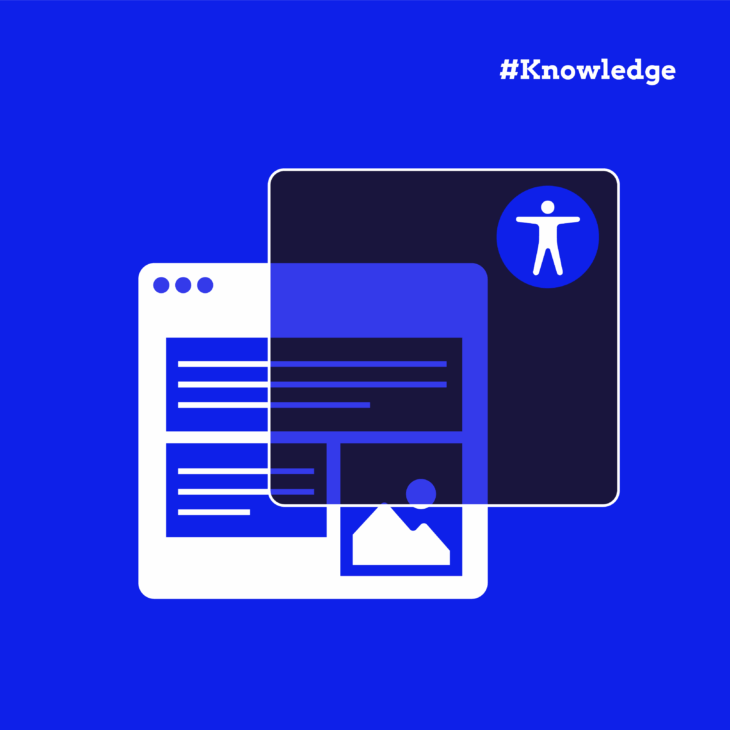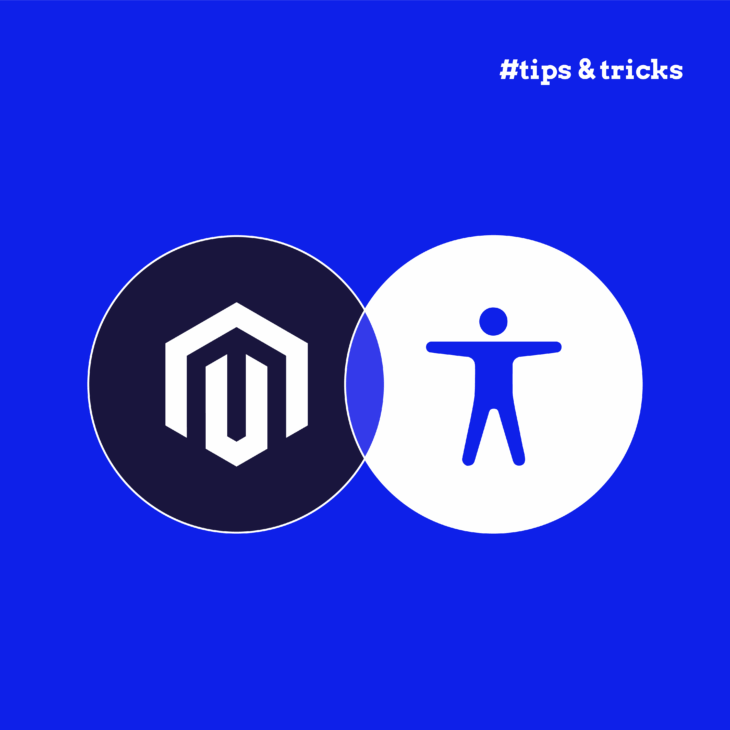Accessibility overlays promise to fix your website’s accessibility issues with just one line of code.
Sounds brilliant, right?
For business owners and developers under pressure to meet compliance deadlines, these tools seem like the perfect answer. Install a widget, tick the box, move on. But there’s a nagging doubt – if it’s really that simple, why do so many accessibility professionals warn against them?
Recently, someone in the OurBlind community (a forum for people who are blind or visually impaired) asked whether AccessiBe had improved over the past year, noting previous issues with screen readers. The response was unanimous and blunt: “No, it absolutely has not.” One user went further, calling overlays “malware” and noting that many people who are blind have installed browser extensions specifically to block them.
The truth? Accessibility overlays are the tech equivalent of painting over rust. They might look like they’re solving the problem, but underneath, things are actually getting worse.
What are accessibility overlays? The $490 fix that could cost you thousands
Accessibility overlays are JavaScript-based tools that sit on top of your website like a filter. They attempt to modify how your site appears in users’ browsers without actually fixing any of the underlying code issues.
However, the sales pitch is irresistible: One line of code. Instant compliance. No developers required.
Who wouldn’t want that? Paste a snippet into your site header, and within 48 hours, the vendor’s AI supposedly makes your site accessible. No need to understand WCAG guidelines, rebuild forms, or restructure navigation. For time-pressed businesses, it feels like finding a magic wand.
Reality check: The Overlay Fact Sheet lists over 30 companies selling these tools – AccessiBe, UserWay, AudioEye, and others. Many white-label their products, so you might not even know which company’s code you’re actually using.
But here’s what vendors don’t advertise. In 2024, 1,023 companies with accessibility widgets active on their websites received lawsuits. The widgets themselves became evidence of negligence. Plaintiffs specifically cited these tools as creating barriers to access, violating WCAG standards, and preventing users with disabilities from using the sites properly.
Small businesses often think, “Better than nothing, right?” Wrong. That widget proves you knew about accessibility but chose a cosmetic fix. Courts interpret this as wilful negligence – and that’s when settlements get expensive.
The hidden cost calculator: overlays + lawsuits + emergency fixes
AccessiBe markets itself as the “#1 rated web accessibility solution” with prices from $490/year for small businesses to $3,990/year for larger sites.
Sounds affordable until you factor in reality:
- Overlay subscription: $490-$3,990/year.
- Typical ADA settlement: $5,000-$20,000.
- Emergency remediation when sued: $5,000+.
- Legal fees and disruption: Thousands more.
That “cheap” overlay just became a $20,000+ mistake.
Compare this to The A11Y Collective‘s approach:
Team training ($50-$420 per course bundle) creates permanent in-house capability. Your developers learn to build accessibility from the start. No recurring fees, no dependency on third-party scripts.
Prefer expert help? Our accessibility audit costs $5,000 flat – delivered in four weeks with a clear remediation roadmap. Yes, it takes longer than “instant” overlay installation, but it actually works.
The difference? Education and audits build lasting compliance. Overlays create perpetual dependence on tools that don’t even protect you legally, and they don’t eliminate costs, despite the advertising. Instead, they multiply them through subscriptions, lawsuits, and emergency fixes you’ll need anyway.
How accessibility overlays break the sites they’re supposed to fix
Overlays promise to fix these common issues:
- Adjusting colour contrast between text and backgrounds.
- Changing font sizes or typefaces.
- Auto-generating alt-text for images.
- Adding keyboard focus indicators.
- Pausing animations and GIFs.
Sounds helpful, right?
Let’s follow Sarah, a screen reader user, trying to book a restaurant reservation on a site with an overlay installed.
First, the overlay overrides her carefully configured JAWS settings. She’s spent years perfecting her setup, but the widget decides it knows better. Next, she presses Tab to navigate – except the overlay has hijacked her keyboard commands. Instead of moving through the booking form, she’s stuck in the overlay’s menu.
When she finally reaches the form, each field gets announced twice. “Name, edit, name, edit.” Confusing and exhausting. Then disaster strikes: she’s trapped. The overlay’s focus trap won’t let her navigate away from the date picker. She can’t complete her booking.
She gives up.
Unfortunately, that’s a very common scenario. Overlays often sabotage existing setups and they also can’t detect or fix important accessibility elements:
- Unlabelled form fields (is that box for email or phone?).
- Broken keyboard navigation order (jumping randomly around the page).
- Illogical heading structure (H1, H4, H2… chaos).
- Missing or vague link text (“click here” tells nobody anything).
- Lost content relationships (which error message belongs to which field?).
These failures create specific WCAG violations:
As one Reddit user puts it, overlays like AccessiBe are
…unhelpful at best, and actively inaccessible at worst.
The WebAIM Survey confirms this: 67% of accessibility practitioners rate overlays as ineffective. Among respondents with disabilities? 72% say they don’t work.
The 2025 FTC fine that changed everything
The Federal Trade Commission (FTC) fined AccessiBe $1 million in April 2025. The company claimed its plug-in accessWidget could make any website compliant with Web Content Accessibility Guidelines (WCAG). The order now prohibits AccessiBe from making misleading claims and requires the company to pay $1 million.
This was the first federal enforcement action against an overlay vendor – and it revealed the trap businesses fall into.
The legal trap for businesses using overlays
Here’s what makes overlays particularly dangerous from a legal perspective:
Installing an overlay proves you know about accessibility requirements.
Think about that for a moment. By adding a widget, you’re documenting that you:
- Recognise your site has barriers.
- Understand legal requirements exist.
- Choose a surface-level fix over genuine remediation.
Courts don’t see this as a good-faith effort. They see it as choosing the cheapest option, even though you know it doesn’t actually work.
The FTC order specifically states AccessiBe cannot claim their automated tools ensure “continued automatic compliance with WCAG over time as website content changes.”
The only accessibility investment that pays off: education, not overlays
No overlay product on the market can cause a website to become fully compliant with any existing accessibility standard and therefore cannot eliminate legal risk.
So what actually works?
Education-first approaches, like The A11Y Collective’s courses, teach your team to identify and fix root causes. Instead of masking problems, your developers learn to build accessibility from the start, designers understand colour contrast, and content creators write meaningful alt text.
Yes, proper accessibility takes time and resources. But unlike overlays’ perpetual subscriptions, education creates lasting value. Plus, you’re creating legal evidence of a genuine commitment to inclusion.
The business benefits multiply:
- Better SEO – Clean, semantic code ranks higher.
- Improved usability – What helps users with disabilities helps everyone.
- Expanded market – 16% of people globally have disabilities.
- Genuine legal protection – Documentation shows real commitment.
The choice is yours: $490/year for an illusion, or invest once in skills that compound forever.

Ready to build real accessibility instead of masking problems?
Learn to identify and fix root causes with our education-first approach. Build lasting compliance that protects your business and creates genuine inclusion.




